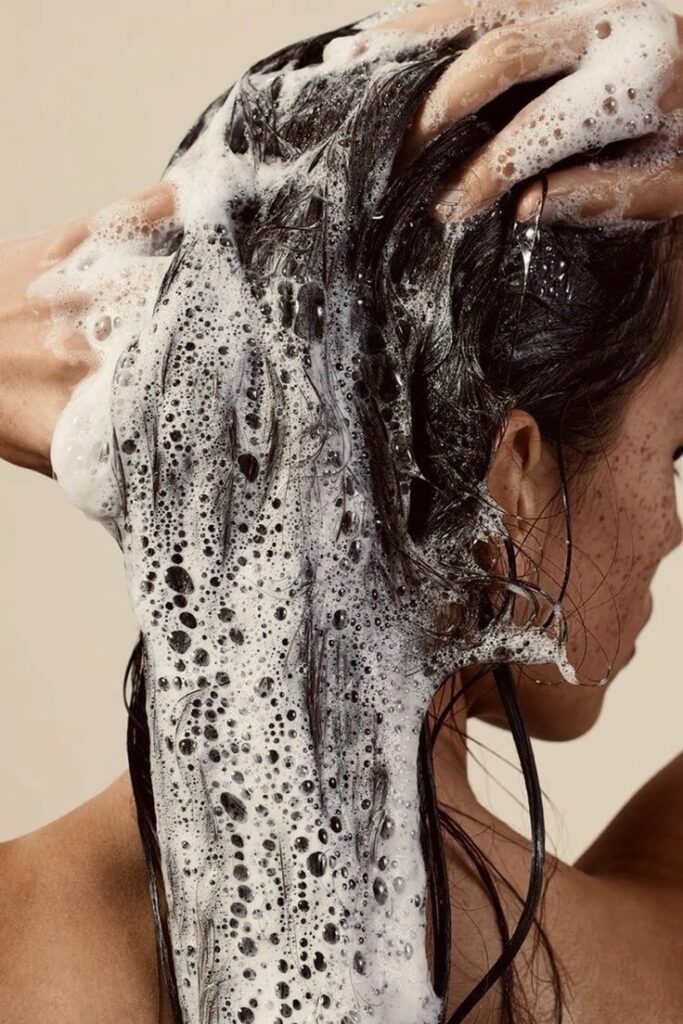As winter approaches, it brings with it a unique set of challenges for hair care. The cold air outside, combined with the dry heat indoors, can strip moisture from your hair, leaving it dry, brittle, and prone to damage. To help you maintain healthy and vibrant locks throughout the winter months, here are some essential tips and strategies for winter hair care.
1. Hydrate Your Hair
The cornerstone of winter hair care is hydration. Cold weather can lead to a significant loss of moisture in your hair, making it essential to use products that replenish and retain moisture. Start by incorporating a high-quality hydrating shampoo and conditioner into your routine. Look for sulfate-free formulas that cleanse without stripping natural oils. Additionally, consider using a leave-in conditioner or a hydrating hair serum after washing to provide an extra layer of moisture.
Weekly Deep Conditioning! In addition to your regular conditioner, treat your hair to a deep conditioning mask once a week. Choose masks enriched with nourishing ingredients like argan oil, shea butter, or coconut oil. These treatments penetrate the hair shaft, providing intense hydration and helping to repair any damage caused by the cold weather.
2. Limit Hair Washing
One common mistake during the winter months is washing your hair too frequently. Shampooing every day can strip your hair of its natural oils, leading to increased dryness and frizz. Instead, try extending the time between washes to every two or three days. This will help maintain the natural moisture balance in your hair while also reducing the risk of damage.
Dry Shampoo as a Lifesaver! On days when you don’t wash your hair, dry shampoo can be a lifesaver. It helps absorb excess oil at the roots and adds volume without the need for water. Just spray it onto your roots, let it sit for a few minutes, and then brush through your hair for refreshed locks.
3. Protect Your Hair from the Elements

When heading outdoors in winter, it’s crucial to protect your hair from harsh weather conditions. Cold winds can cause hair to become tangled and damaged, so consider wearing a hat or scarf when you go outside. Opt for materials like silk or satin-lined hats that minimize friction and prevent breakage.
Avoid Going Out with Wet Hair! Never leave the house with wet or damp hair during winter. Wet hair is significantly more fragile than dry hair and can freeze in cold temperatures, leading to breakage. If you must wash your hair before going out, ensure it is completely dry or use a blow dryer on a low heat setting to avoid damage.
4. Minimize Heat Styling
Winter is not the best time for heat styling tools like blow dryers, curling irons, or straighteners. The cold air already makes your hair more susceptible to damage; adding heat can exacerbate the problem. If you need to style your hair, try air-drying whenever possible or use heat protectant sprays if you must apply heat.
Embrace Protective Hairstyles! Consider wearing protective hairstyles such as braids, buns, or twists that require minimal heat styling and reduce exposure to harsh elements. These styles not only help protect your hair but also keep it looking neat and stylish throughout the season.
5. Nourish Your Scalp
Healthy hair starts with a healthy scalp. The dry winter air can lead to an itchy or flaky scalp, which can affect overall hair health. Incorporate scalp treatments into your routine that focus on hydration and nourishment. Look for oils such as jojoba or tea tree oil that can soothe irritation and moisturize the scalp.
Scalp Massages! Regular scalp massages can improve blood circulation and promote healthy hair growth while also providing relaxation during stressful winter months. Use gentle pressure with your fingertips while applying nourishing oils for added benefits.

6. Regular Trims
Regular trims are essential in maintaining healthy hair during winter. Split ends are more likely to occur when hair is dry and exposed to cold weather conditions. Aim for a trim every six to eight weeks to keep your ends healthy and free from damage.
Preventing Split Ends! One of the primary reasons for regular trims is to prevent split ends. Split ends occur when the protective outer layer of the hair cuticle wears away, leading to fraying and breakage. During winter, hair is more susceptible to dryness due to cold air and indoor heating, which can exacerbate split ends. By trimming your hair every 6 to 8 weeks, you remove these damaged ends before they can travel up the hair shaft, causing more extensive damage. This proactive approach helps maintain the overall health of your hair and ensures it looks vibrant and full.
7. Maintain a Healthy Diet
What you eat plays a significant role in the health of your hair. During winter months, focus on consuming foods rich in vitamins and minerals that promote strong and healthy locks. Incorporate foods high in omega-3 fatty acids (like salmon), vitamins A and E (found in leafy greens and nuts), and biotin (present in eggs) into your diet.
Stay Hydrated! Don’t forget about hydration from within! Drinking plenty of water helps keep both your skin and hair hydrated during dry winter months.
Conclusion
Caring for your hair during winter requires extra attention and effort due to the harsh environmental conditions that can lead to dryness and damage. By following these essential tips—hydrating regularly, limiting washes, protecting against the elements, minimizing heat styling, nourishing your scalp, getting regular trims, and maintaining a healthy diet—you can ensure that your locks remain healthy and vibrant throughout the colder months.For those looking for high-quality products that support their winter hair care routine, consider sourcing from reputable suppliers such as a korean skincare wholesale exporter. This way, you can access effective formulations designed specifically for various hair types and concerns while ensuring that your winter regimen remains robust and effective!



